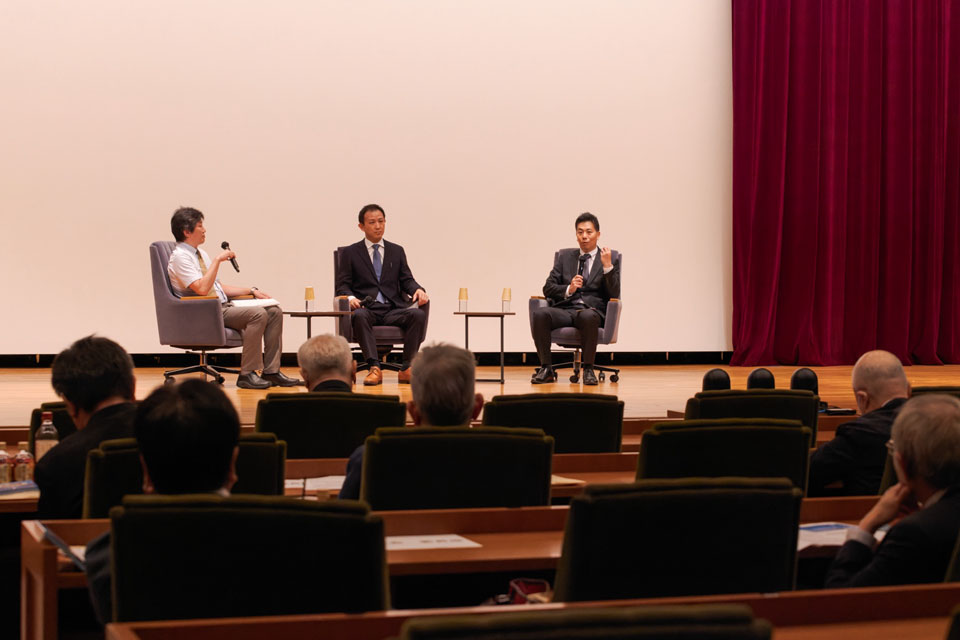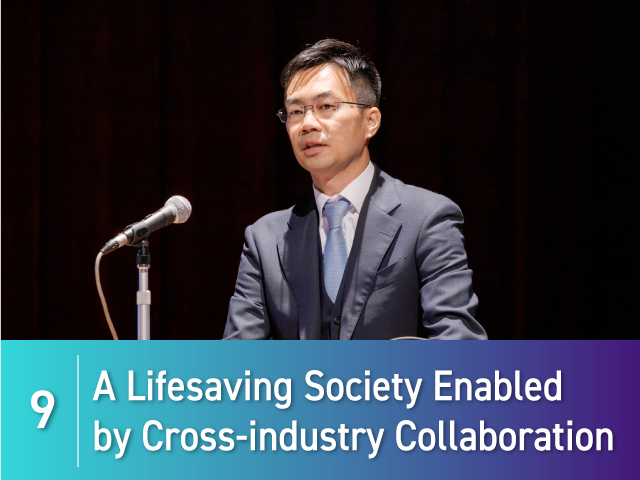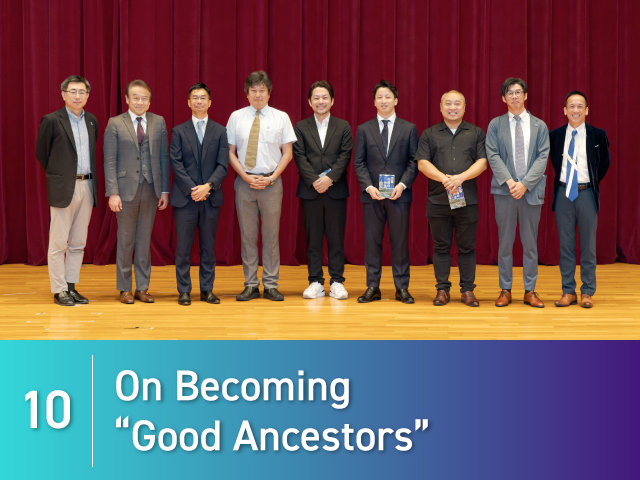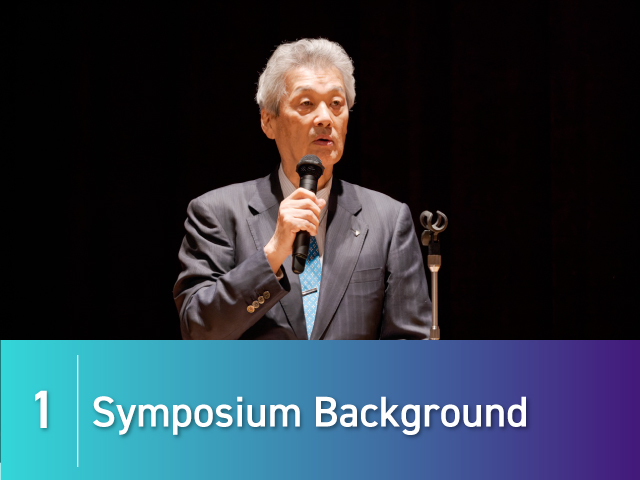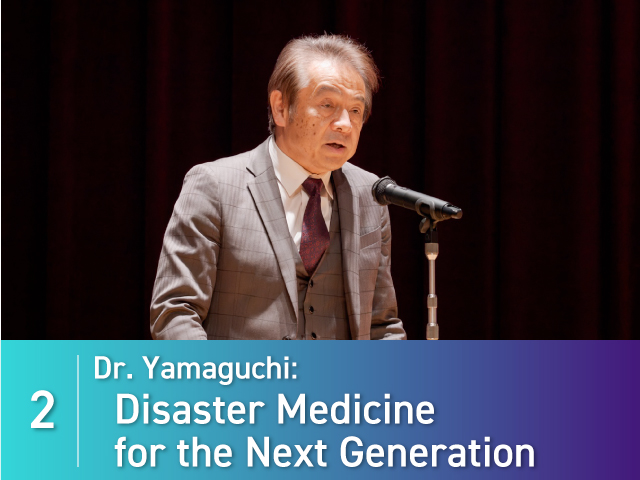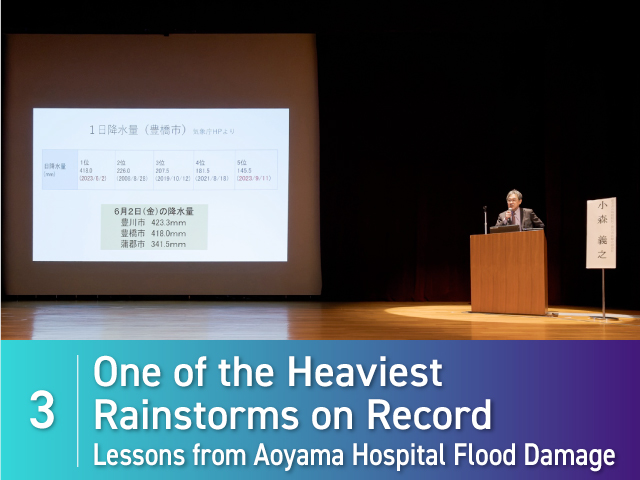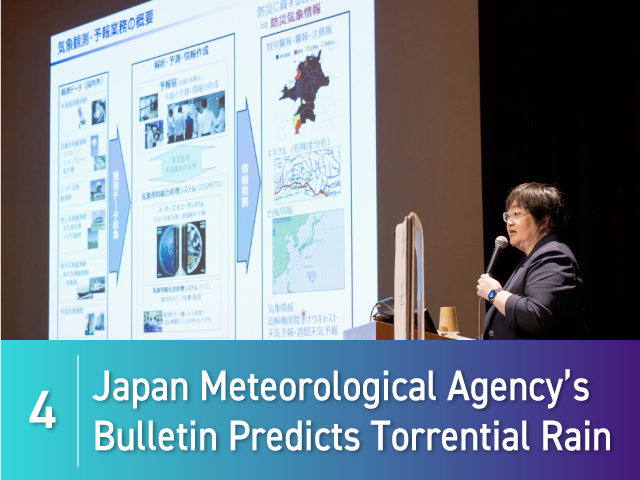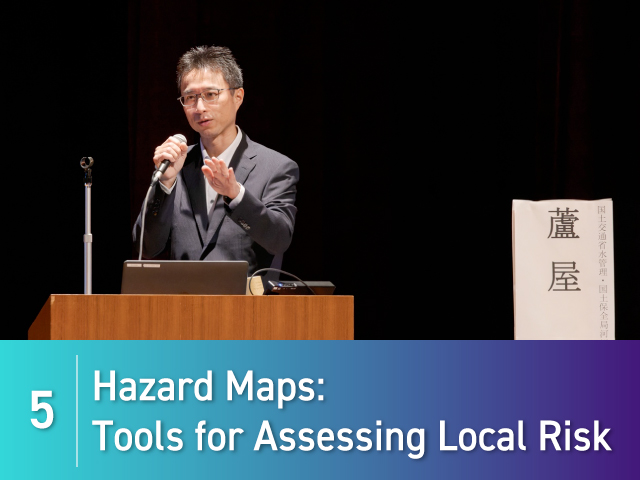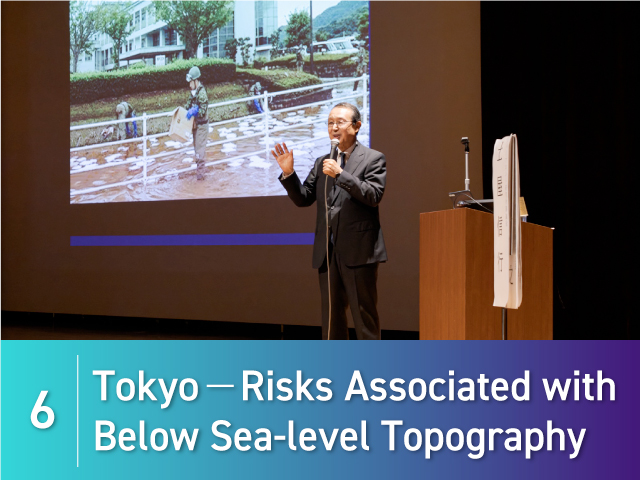8. Incorporating Medical Safety into Urban Development
Professor Takaaki Kato of the University of Tokyo is an urban planning expert and a leading authority on community planning for disaster prevention. He conducts urban disaster simulation research and liaises with local governments on disaster prevention-based community development.
He began his remarks by expressing grave concern that Japan “is entering an ‘era of disasters,’ including a major earthquake directly beneath the capital and in the Nankai Trough.”
Prof. Kato went on to explain that about 40% of Japan’s hospitals are located in flood-prone areas, putting them at high risk for damage during heavy rains. In urban planning, one must keep in mind that hospitals require spacious building lots, making complete avoidance of hazardous areas difficult. One countermeasure, Prof. Kato explained, is the Concept of Urban Grand Design for Adaptable City to Flood, a roughly 20-year ongoing project involving collaboration among industry, government, and academia.
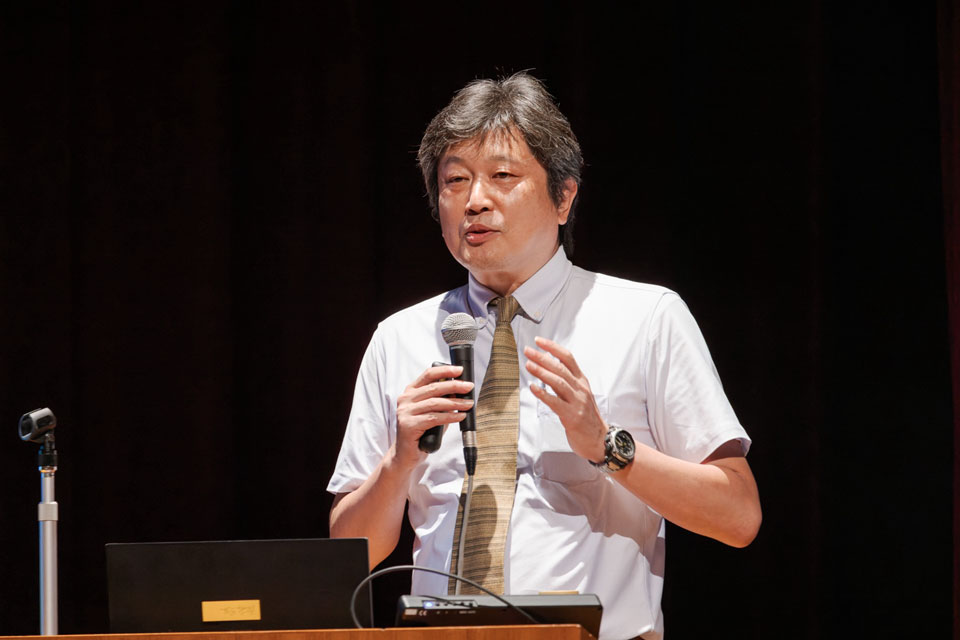
Prof. Kato commented that “we are studying the creation of flood-adaptable neighborhoods and buildings in our urban planning. Our city has spaces designated for evacuation and independent lifeline capability. Victims of disaster-stricken surrounding areas could come here for water, power, and information. This can help save lives. If hospitals must be built in hazardous areas, we need to understand the risk and ensure they can withstand disasters.”
Prof. Kato went on to explain the 2023 launch of a microgrid (an energy system enabling small local areas to operate power self-sufficiently during widespread disaster-generated outages) in Chiba Prefecture’s Isumi City, with a power lifeline technically capable of operating selfsufficiently. He also introduced the concept of a Disaster Independent Lifestyle Zone, in which a community can ride out a disaster without relying on external assistance.
Finally, Prof. Kato cited deficient ambulance transport and medical institution capacity in Tokyo, and sounded the alarm that Japanese society must face this reality. “Estimates suggest there may be 90,000 victims in the event of a Tokyo inland earthquake, 10,000 of whom may be seriously injured,” he reported. “As only 2,100 of those could be transported by ambulance within 12 hours, 16 demand completely exceeds current capacity, signifying the need for a total change in the structure of the current social system.”
